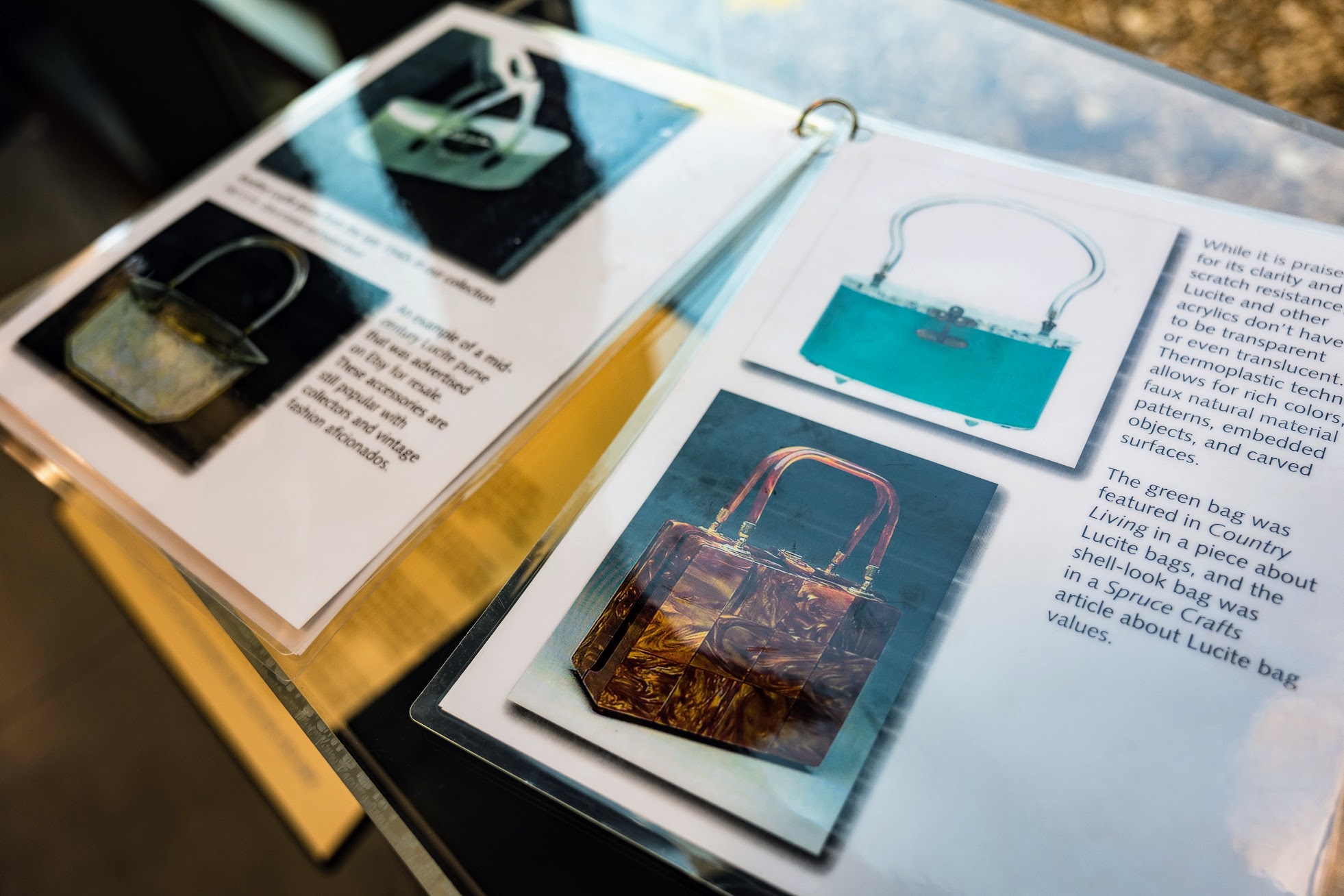Artifact of the Month: 1940s Lucite Handbag
1993.25.B16P – Gift of Eleanor Mazzini
One might argue that the handbag (purse, satchel, or just plain old bag) is probably one of the oldest hominid inventions. An animal bladder, a skin, a gourd, or even a really big leaf could be adapted as an effective way to carry our ever-increasing number of possessions. We know people had purses in more recent prehistory. A circa 2200 BC leather bag covered in dog teeth was discovered near Leipzig, Germany and Otzi, the circa 3300 BC mummified man found in the Alps was carrying a goat skin bag.
Over millennia, a relatively simple and practical way to carry stuff has been elevated to an art form and a status symbol accessory. Today, you can spend thousands of dollars on designer bags in a dizzying array of styles and sizes made from a myriad of materials including hard plastic. (And yet, my keys STILL migrate to the bottom!)
Lucite is one brand of Poly (methyl methacrylate) or PMMA - otherwise known as acrylic. Acrylic resin was first developed in 1928 and came on the market in 1933 as a protective coating or safety bonding for glass. DuPont trademarked their high-quality version “Lucite” in 1937. Post-World War II technology brought this thermoplastic to the masses and Lucite, with its clarity and scratch resistance, became a popular medium for everything from windows to retail fixtures and from fashionable furniture to accessories. The same clear material that allows you to see into Turtle Bay’s aquarium is in this handbag!
According to Frank Maresca, coauthor with Robert Gottlieb of A Certain Style, The Art of the Plastic Handbag 1949-59 (Knopf), "Women of all ages carried these bags, now works of art. They were made in shapes such as beehives, lanterns, and hatboxes, and embellished with rhinestones, colored glass, pearls, and shells."
It wasn’t just handbags. See the laminated cards on our Artifact of the Month display for more Lucite and acrylic accessories!




